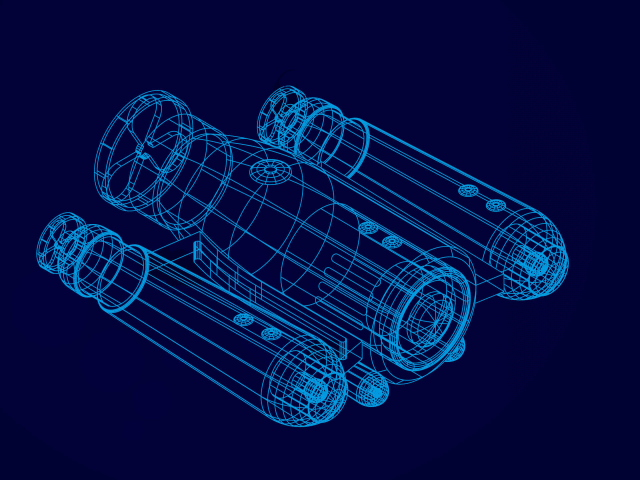Why they do these things right before Christmas I’ll never know.
Normally when politicians tip out big news during the silly season it’s because they want that news to fall into a large, deep hole.
But this was different.
In early December last year, US Secretary of State Lloyd Austin and Australia’s Defence Minister Richard Marles issued a joint statement on the progress of the AUKUS agreement.
The statement didn’t get a lot of press. (See above). What attention it did generate tended to focus on the submarine component of the AUKUS agreement, which will see the acquisition of nuclear submarines by Australia into the 2030s and beyond.
According to the statement, personnel from the Royal Australian Navy will begin training in Guam this year in preparation for Submarine Rotational Force West (SRF-West), the detachment from the US Navy that will base themselves in Perth in preparation for the first Virginia Class subs, which will be maintained in Australia.
But the really interesting news was around Pillar 2.
Pillar 2, you’ll recall, involves the sharing and joint development of advanced military capabilities - quantum, AI, autonomous systems, etc. It’s been the subject of some criticism, even cynicism, due to the vague nature of its ambitions.
But December’s statement went into a fair amount of detail regarding proposed areas of collaboration. This alone was invaluable.
The AUKUS agreement was inked in September 2021 - that’s more than three years ago.
Since then virtually nothing has been said about what Pillar 2 will actually do, at least not publicly.
For businesses in the AUKUS orbit, that’s been a problem. In order to step up and provide the Defence with the capabilities it wants, industry needs demand signals. Those signals can only come from Defence and the longer they are missing the harder it will be.
But December’s statement went some way to filling the gaps.
So what came out of it?
The overarching theme was the heavy emphasis on developing capabilities for the maritime domain.
And when I say heavy emphasis, I mean heavy.
Of the six work streams outlined in the statement all but one focused either exclusively or partly on sub-maritime capabilities.
The first foreshadowed enhanced cooperation on underwater autonomous capabilities, or, in the clunky language of the AUKUS drafters, “integrated trilateral experiments and exercises aimed at enhancing capability development, improving interoperability, and increasing the sophistication and scale of autonomous systems in the maritime domain’’.
Reading between the lines, that means increased use of uncrewed underwater platforms for maritime surveillance. That’s not surprising, given the fierce competition for mastery of the South China Sea, only a portion of which is seen by the public. The real contest is being waged beneath the waves, with China quilting the seabed with an array of sophisticated sensors that will make operating in the South China Seas lethally dangerous for Australian and US subs.
The second involves the development of common AI algorithms for multiple systems, including P-8A Maritime Patrol Aircraft, to process data from each nation’s sonobuoys. Again, the emphasis here is obvious - the P-8A is primarily an anti-submarine platform.
The other workstreams involve using quantum capabilities to improve navigation and positioning, particularly in the underwater, stealth domain, and strengthening cyber security for critical naval supply chains.
What does it all mean?
A few thoughts:
The Pillar 2 priorities make it clear that AUKUS is a security pact solely focused on Indo-Pacific rivalry. Of course, this was never in any serious doubt, but the emphasis on maritime capabilities should make it crystal clear that AUKUS has no applications in other theatres. That’s worth noting because the language around AUKUS has in the past held open the possibility of wider applications. But the truth is nobody’s buying subs to fight Russia in Ukraine. The emphasis on advanced maritime capabilities also makes it impossible to deny that AUKUS is about countering and containing China. Again, this might seem like a statement of the obvious, but it’s worth noting, if only because the publication of these workstreams makes it hard to tell Beijing - at least with a straight face - that AUKUS has nothing to do with them.
That’s likely to up the temperature by a few degrees.
The detail in the joint statement suggests that while Pillar one will deliver strike capabilities, pillar 2 will provide the enabling capabilities to make that happen.
Another interesting - and encouraging - detail to fall out of the statement was the involvement of industry in the development of Pillar 2 technologies. The AUKUS partners will convene an “Advanced Capabilities Industry Forum’’, to be comprised of trilateral government and industry representatives.
The role of the forum will be to inform policy, technical, and commercial decision-making.
An AUKUS Defense Investors Network will be created to help facilitate private sector investment in emerging capabilities.
Who knows if these forums will ever do anything meaningful, but it’s gratifying to see governments finally open the AUKUS door to the private sector, even if only by a crack.
A final point: the AUKUS agreement is going to massively expand the three country’s industrial base. Protecting it from espionage and cyber attacks will become increasingly difficult as a tangle of supply chains expands, increasing the overall attack surface.
At SoftIron we’ve been saying this for a while. International supply chains, particularly in tech, are a spaghetti junction. Virtually all advanced manufacturing relies overwhelmingly on componentry built in China, with all of the risks that entails.
The AUKUS partners have said they will work with industry partners to increase cyber hygiene but their language makes it clear they see weak supply chain security as the main vulnerability.
And you know what, they’re right.






